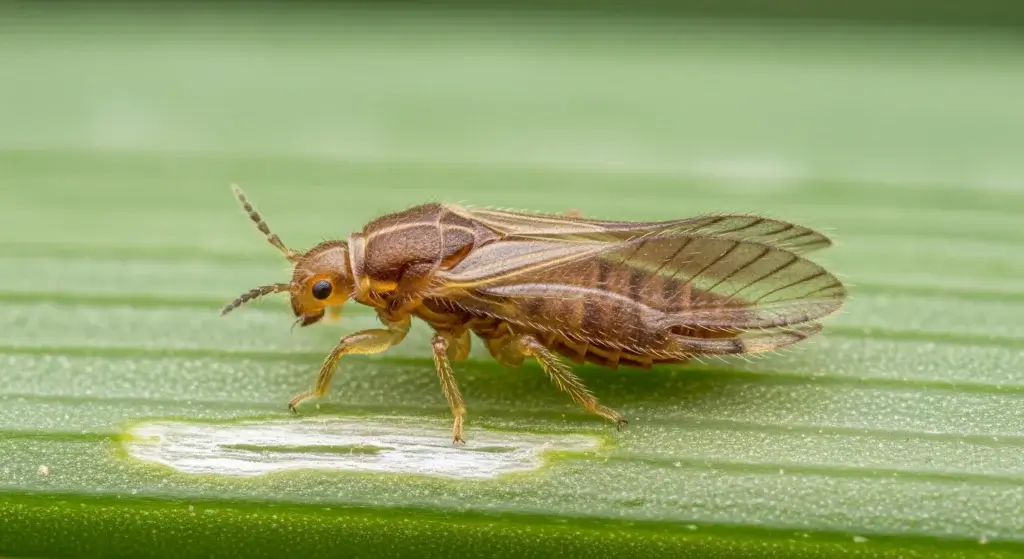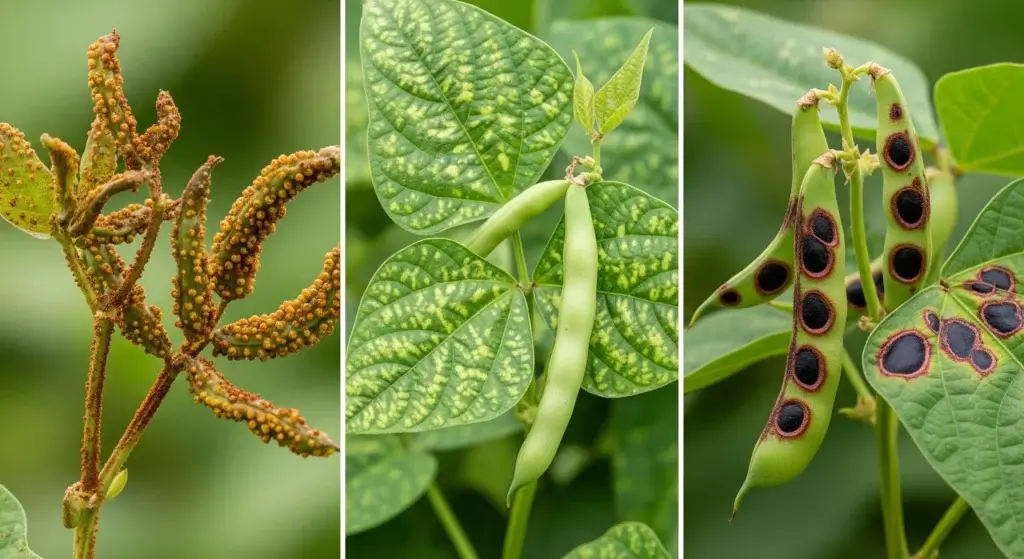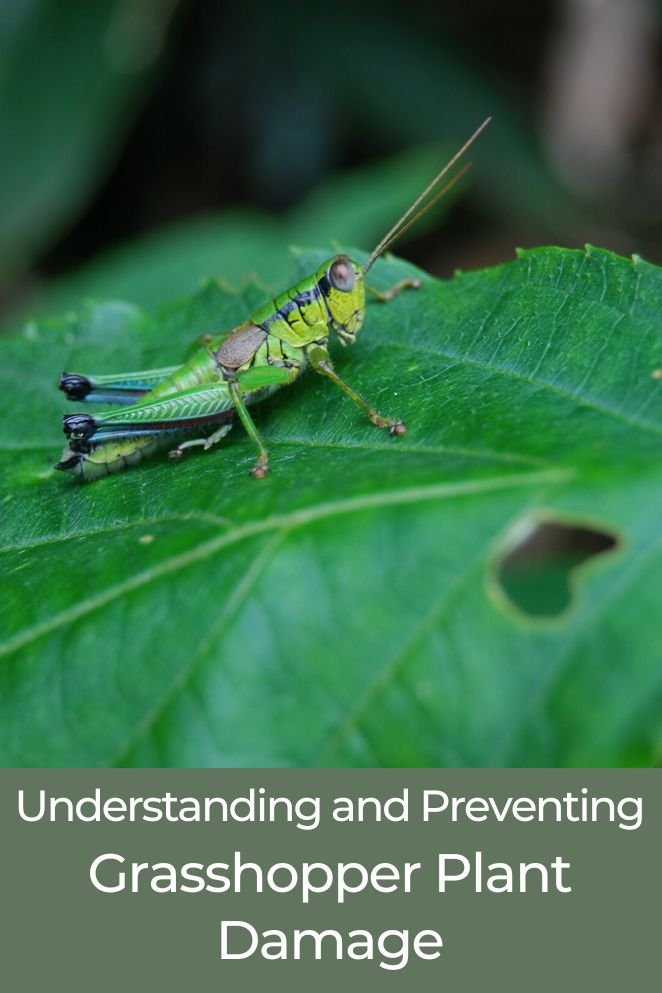
Let’s explore the realm of grasshoppers and their less-than-friendly influence on our cherished plants.
If you’ve ever pondered the reasons behind your garden feeling besieged, join us as we decode the enigma of grasshopper-induced plant damage.
In this journey, we’ll unravel the intricacies of these hopping creatures and their impact on our beloved flora.
Stick with us to gain insights into why your garden might be facing a subtle yet significant challenge.
Life Cycle of Grasshoppers
Stage 1: Egg
The grasshopper saga commences with the egg stage. Female grasshoppers deposit clusters of eggs in the soil during late summer or fall.
These egg pods, often resembling foam or a frothy substance, serve as the time capsules for the next generation.
Hidden beneath the soil, these eggs patiently await the arrival of spring.
Tip: Keep an eye on your garden in late summer for signs of grasshopper eggs. Early detection is important in preventing future infestations.
- Read also: Harnessing the Power of Ladybugs for Effective Aphid Control
- Read also: A Guide to Organic Whitefly Control
Stage 2: Nymph
As spring awakens, the eggs hatch, giving birth to nymphs. Unlike their adult counterparts, nymphs are miniature versions with underdeveloped wings.
These young grasshoppers undergo a series of molts, shedding their exoskeletons as they grow.
Each molt brings them closer to adulthood, and with each stage, their wings become more pronounced.
Tip: Nymphs are most active in the early stages of their development, making this a crucial time for intervention if you want to control their population.
Stage 3: Adult
Finally, the nymphs transform into adult grasshoppers, often associated with warm summer days.
At this stage, their wings are fully developed, allowing them to cover greater distances in search of food and mates.
Adult grasshoppers are at the peak of their reproductive capabilities, completing the cycle by laying eggs and starting the process anew.
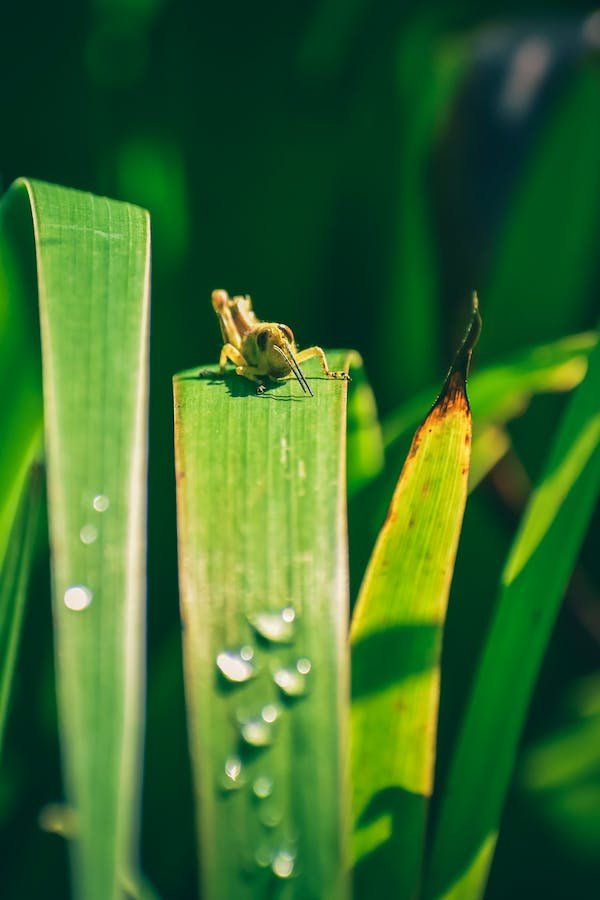
What Are the Plant Damages Caused by Grasshoppers
Their feeding habits leave a distinctive mark on plants. Now, let’s closely examine the precise damages they inflict.
Leaf munching
This is the most common type of damage, and it occurs when grasshoppers eat the leaves of plants. Leaf munching can range from minor leaf chewing to complete removal of all the leaves.
Stem damage
Grasshoppers can also damage stems by chewing on them or by clipping them off. This can weaken the plant and make it more susceptible to breakage.
Fruit and flower damage
Damage to fruits and flowers is a consequence of grasshopper activity, either through direct consumption or egg-laying.
Such actions have the potential to diminish the crop yield and affect the aesthetics of ornamental plants.
Seedling sabotage
Seedlings are particularly vulnerable to grasshopper attacks. These insects have the capability to consume entire seedlings, hindering the early stages of plant growth.
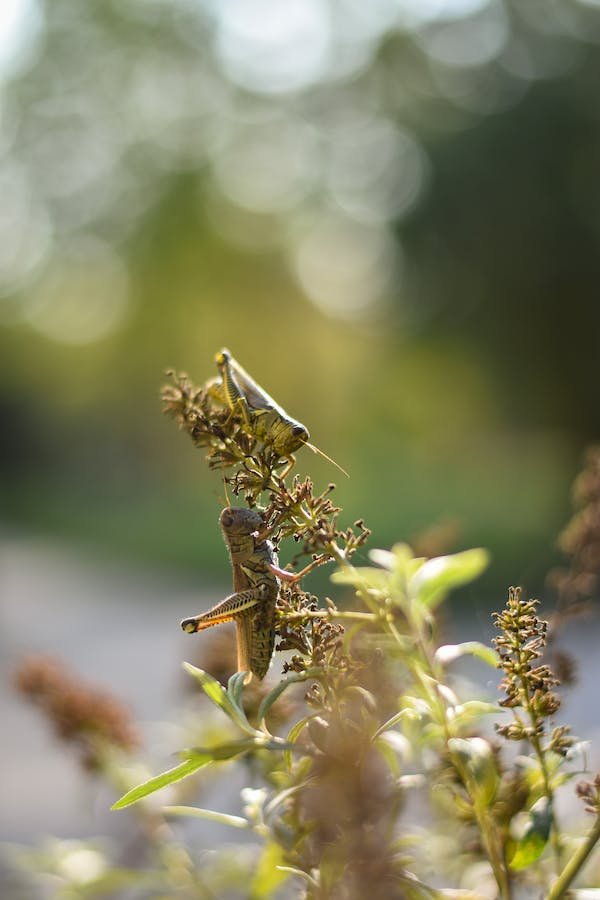
Optimal Conditions for Grasshopper Habitat
Understanding the factors influencing grasshopper populations is crucial for effective plant protection.
Various environmental elements contribute to grasshopper infestations, and recognizing these conditions provides a strategic advantage in safeguarding your plants.
While optimal living conditions may vary among grasshopper species, certain general characteristics can be identified.
Exploring these factors will enhance your ability to proactively manage and mitigate potential threats to your plants.
Climate: Warm and dry
Imagine sunny days and gentle breezes. Grasshoppers, being cold-blooded, rely on sunshine to regulate their body temperature.
However, they face difficulties digesting food in wet environments.
Understanding these preferences sheds light on the conditions that favor grasshoppers and can guide strategies for managing their populations effectively.
Habitat: Sustenance and concealment
Grasshoppers are frequently encountered in grasslands, meadows, and open fields.
They exhibit a preference for locales abundant in vegetation, providing both sustenance and concealment.
Additionally, certain species may inhabit agricultural areas, showcasing their adaptability to diverse environments.
Food: Diverse plant buffet
Herbivorous by nature, grasshoppers thrive on a diverse array of leafy greens, grasses, and flowering plants.
Their dietary preferences incline towards delights such as sunflowers, alfalfa, and dandelions, making these choices key components of their well-rounded nutrition.
Reproduction process
Grasshoppers undergo a unique reproductive cycle known as incomplete metamorphosis, progressing through distinct egg, nymph, and adult phases.
The reproductive journey involves the laying of eggs in the soil, with hatching nymphs undergoing multiple molting stages before maturing into adults.
Ideal breeding conditions encompass the presence of suitable soil for egg deposition and abundant vegetation to sustain the nourishment of the developing nymphs.
Protection from predators
Grasshoppers require environments with adequate cover to shield themselves from predators.
This can encompass tall grasses, shrubs, or other vegetation providing concealment.
Predatory entities like birds, wasps, and praying mantises share a fondness for grasshoppers, creating a delicate balance in the ecosystem.
Therefore, a secure refuge with fewer of these voracious hunters fosters the flourishing of grasshopper populations.
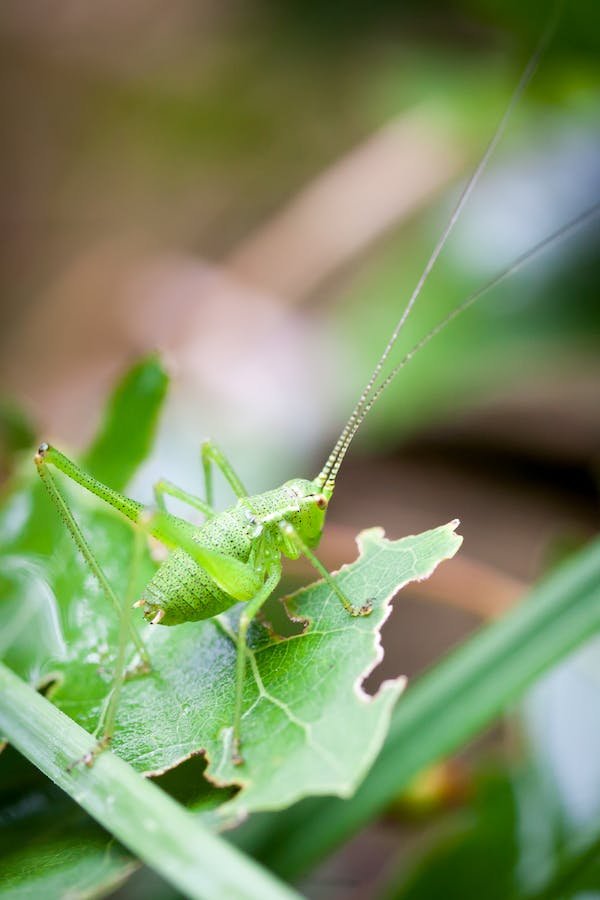
How to Control Grasshopper Plant Damage
Predator allies
Create a welcoming environment for birds, wasps, and praying mantises by establishing flowering borders, installing nest boxes, and refraining from using broad-spectrum insecticides that can harm these essential predator populations.
Enhance biodiversity in your habitat by incorporating commercially available beneficial insects into the ecosystem.
Explore options such as nematodes or parasitic wasps that specifically target grasshoppers, contributing to a balanced and sustainable ecosystem.
Beneficial plants
Cultivate a grasshopper-resistant environment by incorporating herbs and flowers known for their deterrent properties, such as cilantro, calendula, and marigolds.
Strategically interplanting these natural repellents with your crops forms an effective barrier against grasshopper invasions, enhancing the overall protection of your garden or farm.
Community efforts
Strengthen your defense against grasshopper infestations by teaming up with neighboring gardeners and farmers.
Coordinated efforts prove more effective in controlling the spread of these pests, promoting a united front to safeguard crops and enhance overall pest management.
Barriers and traps
Safeguard your plants by installing physical barriers like row covers or mesh, especially during the early stages of growth.
These barriers prove particularly effective in shielding vulnerable plants.
Additionally, strategically placing sticky traps around your garden serves as an efficient method to capture wandering grasshoppers, limiting their movement and protecting your plants.
Cultural practices
Enhance pest control by incorporating crop rotation into your farming practices.
This technique disrupts grasshopper breeding grounds by changing the location of crops each season, making it challenging for grasshoppers to locate suitable sites for egg-laying.
Deep plowing in the fall further contributes to effective pest management by exposing grasshopper eggs to harsh weather conditions, reducing their survival rates, and promoting a healthier crop environment.
Diatomaceous earth
Apply food-grade diatomaceous earth around the bases of plants.
As grasshoppers crawl over it, the diatomaceous earth dehydrates them, effectively leading to their demise.
This method serves as an environmentally friendly approach to pest control in gardens and plantations.
Insecticides
Consider grasshopper-specific baits or insecticides as a final option.
Select formulations designed specifically for grasshoppers and follow the instructions on the label meticulously to minimize any potential harm to other beneficial insects.
This cautious approach ensures effective pest control while preserving the overall balance of the ecosystem.
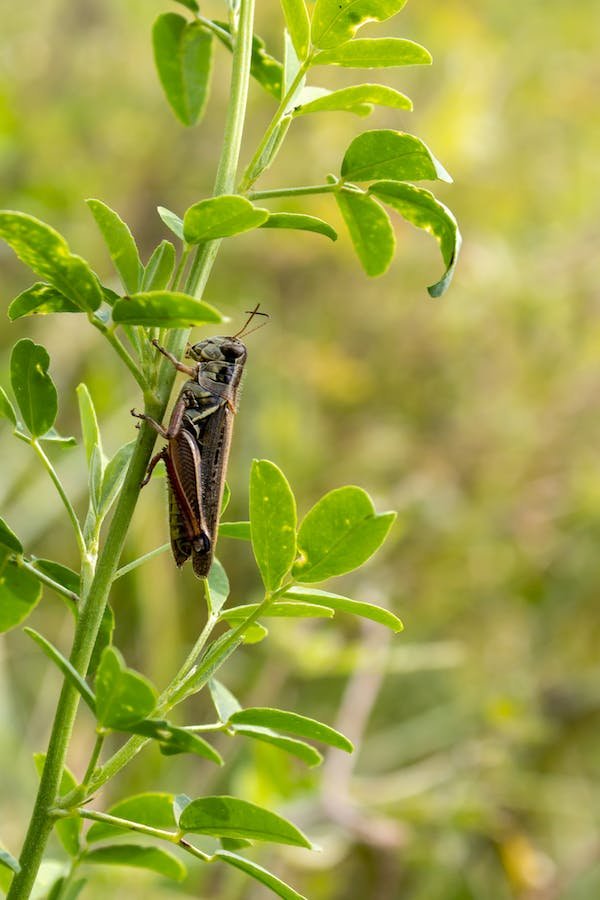
- Read also: Understanding Thrips and Plant Damage
- Read also: Stink Bug Plant Damage and How to Protect Your Garden
Conclusion
Concluding our exploration, it becomes evident that grasping the dynamics of grasshoppers is essential for safeguarding our plants.
Through proactive measures and staying informed, we can establish a harmonious balance between these creatures and the vibrant life within our gardens.
FAQs
Not all grasshoppers are equal offenders. While some species prefer to stick to grasses, others have a broader appetite for various plants.
Pesticides can be effective, but they come with environmental concerns. We recommend exploring natural control methods first, such as introducing grasshopper predators.
Early detection is crucial. Keep an eye on your plants during the nymph stage and implement control measures before the grasshopper population explodes.

